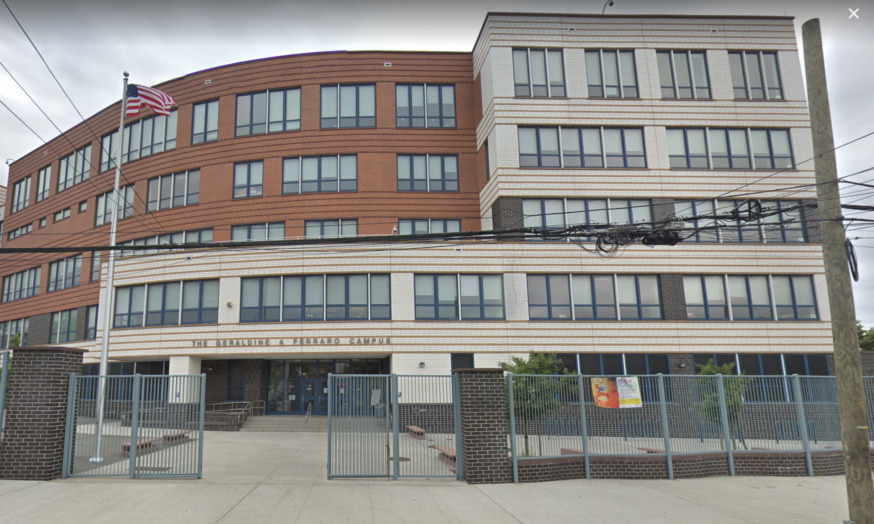
A.C.E. Academy for Scholars at the Geraldine Ferraro Campus in Ridgewood (Google Maps)
Nov. 3, 2020 By Allie Griffin
The Department of Education (DOE) shuttered three Queens public schools for two weeks after finding at least two COVID-19 cases at each.
Two of the schools closed last week after at least two students or staffers at each facility tested positive for coronavirus in unrelated cases.
P.S. 213 The Carl Ullman School in Oakland Gardens was closed by the DOE on Saturday, Oct. 31. The school, located at 231-02 67th Ave., will reopen on Nov. 13 for in-person classes.
At least one student at the Oakland Gardens school tested positive for COVID-19, according to DOE testing data. However, the data doesn’t detail whether the second case was a student or staff member.
The A.C.E. Academy for Scholars at the Geraldine Ferraro Campus in Ridgewood shut its doors and switched to full remote learning on Tuesday, Oct. 27. The school building, at 55-20 Metropolitan Ave., will reopen to students and teachers on Nov. 10.
The DOE didn’t provide information on the cases at A.C.E. Academy.
Meanwhile, P.S. 13Q The Clement C. More School in Elmhurst will reopen its doors Wednesday, Nov. 4. It has been closed since Oct. 21 after at least two COVID-19 cases at the school were confirmed.
At least one staff member tested positive for COVID-19 at the school, according to DOE data. The department didn’t provide any details on the the second case, but did say the two cases aren’t linked.
The three schools fall under the DOE safety protocols that mandate the closure of a school building for 14 days when at least two unrelated coronavirus cases are confirmed. All classes are held remotely during the two-week period.
“We do not hesitate to take quick action for the health and safety of our school communities, and that’s exactly what we do when positive cases are confirmed,” DOE spokesperson Nathaniel Styer said. ”
Queens public schools have the lowest COVID-19 positivity rate among the five boroughs, according to data from the DOE in-school testing program results.
Of the 22,405 COVID-19 tests administered to Queens students and staff, there have only been 17 positive cases identified. The positivity rate is just .08 percent — below the citywide school rate of .15 percent.
